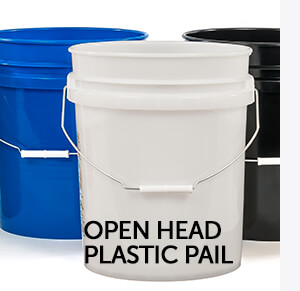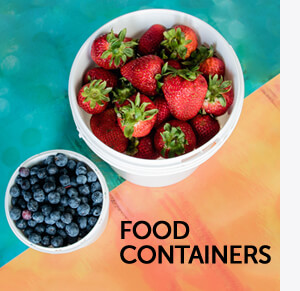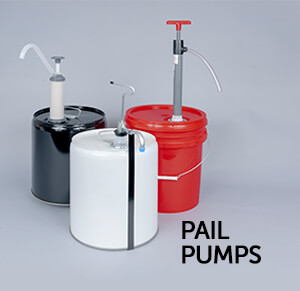

55 Gallon Drum FAQs - Drum Dimensions and More
Barrels=Drums=BASCO, and The Fifty-Five Gallon Drum.
BASCO. That’s an acronym for "Barrel Accessories and Supply Company", which is a clue to how long we’ve been around. Yep, we got our start in this business back when people said “barrels” when they meant “drums”. We’re the industry leader with the most types, styles, and sizes in stock.
We’ll leave the subject of actual wood barrels to the coopers of the world. Yes, coopers are people who build wood barrels – anybody with the last name of “Cooper” has wood barrels somewhere in their ancestry!
Anyway, ever wonder why the 55 gallon drum (also referred to as a 208 liter drum) is so darned popular? It’s strong, tough, and durable. It’s almost universal in the kinds of products it can hold. It can be cleaned and reused many times. A leader in the steel drum business stated that the 55 gallon drum is successful because “it is the largest single package that can be easily manipulated by one person”.
Think about it – smaller packages like pails, can be hand-carried, but require more filling, more handling, and they’re not really very recyclable or reusable. Large packages, like IBCs, hold more, but can’t be moved without a forklift, and they require some specialized equipment to fill and dispense. The 55 gallon drum hits the sweet spot.
Here are (just a very few) Frequently Asked Questions About 55 Gallon Drums
What is a 55-gallon drum?
A cylindrical container that is used to transports and stores bulk liquids, solids, and powders. Steel and stainless steel versions of the 55 have pretty standard dimensions. Plastic drum dimensions vary a bit more from manufacturer to manufacturer. Fiber drums have standard sizes, and their height can often be customized to meet specific requirements.
What does “tight-head” mean?
It’s a term from the old wooden barrel days. Today, it means a drum with a permanently attached top, or head. The drum is filled and emptied through threaded closures (plugs or bungs). Ideal for low-viscosity liquids like solvents, oils, chemicals, soaps, and many paints.
What’s an “open-head”?
A drum with a removeable lid, held in place with a locking ring. An open-head drum is better for slow-moving liquids like adhesives and thick paint.
What can you ship in a 55-gallon drum?
Just about anything that’s compatible with the drum material. Obviously, corrosives wouldn’t do well in a steel drum, and strong solvents won’t do well in a plastic drum. Fiber drums are great for powders, and semi-solid products. There is a 55 gallon drum that’s right for almost every product.
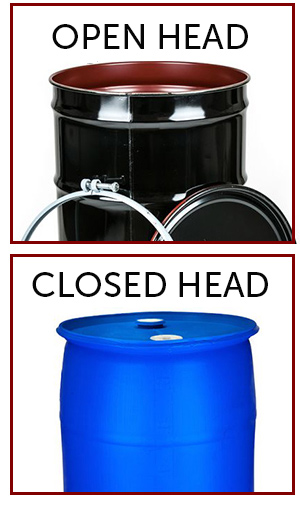

What does a filled 55-gallon drum weigh?
Fifty-five gallons of water weighs 459 pounds, so depending on the drum, you’re looking at around 500 pounds. Your drum could be heavier or lighter, depending on the density of your product.
What is a “UN-rated” drum?
“UN” stands for the international system of standards maintained by the United Nations. Drums and other containers that are intended to contain a hazardous material, or “dangerous goods” in UN-talk, must meet certain performance standards. The level of performance of a particular container is marked on the container.
How many drums fit on a standard pallet?
A 48” x 48” pallet will easily accommodate four filled drums. Empty drums can also be stacked at least two high on a pallet. Be sure to stabilize the empties with stretch wrap or a large rubber band!
What are the Dimensions of a 55 Gallon Drum?
|
|
STEEL |
PLASTIC |
FIBER |
|||
|
|
Tight-Head |
Open-Head |
Tight- Head |
Open-Head |
Tight-Head |
Open-Head |
|
Outside Height |
33” |
34-3/4” |
34-3/4” |
36-3/4” |
- |
35-1/2” |
|
Outside Diameter |
23” |
24-1/2” |
23-1/4” |
22-7/8” |
- |
22-3/8” |
These are all approximate dimensions. They’ll vary slightly from manufacturer to manufacturer, and from style to style.
How Do They Make a Drum?


Steel drums (the kind used for shipping, not Caribbean music!) are made from sheets of cold-rolled steel, either low-carbon steel or stainless steel. The sheets are precisely cut to size, then electrically welded into a cylinder shape. This floppy cylinder is “expanded” with reinforcing hoops embossed into the surface. Next, bottoms and tops are mechanically seamed to the body, giving the drum it’s final shape and tremendous vertical crush strength. Open-head drums are equipped with a removeable cover and locking ring. Finally, the drum exterior is painted and/or decorated. Depending on the intended cargo, the interior of the drum may be coated with a special lining to ensure product integrity.
Stainless steel drums are produced in much the same way, except that they’re not painted or lined. On some types, the tops and bottoms may also be welded in place to create a seamless interior that is easy to clean. Because of their much higher cost and reusability, stainless drums are used mainly for high-purity products like fragrances and pharmaceuticals, even wine and spirits.
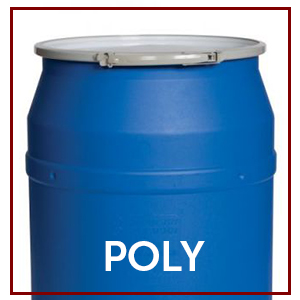

Plastic (or poly) drums are made from blow-molded high-density polyethylene (HDPE). A large tube of melted plastic is clamped into a mold and compressed air expands the tube into the mold to give the drum its shape. The color is molded in, and come available in a few standard colors, like blue, black, white, or natural. Other colors can be provided for large quantities.
Speaking of color, many blue plastic drums are blue in color, which typically indicates that the polyethylene used is FDA- and USDA-compliant, but not always, so check to be sure. A reconditioned poly drum is not recommended for food use; there is always some permeation of the plastic from previous contents. Many are UV resistant drums with molded-in colors that keep light out. Therefore, they can hold all kinds of both liquids and solids: chemicals, pharmaceuticals, food, liquids, cosmetics, electronic parts, hardware, and household products.
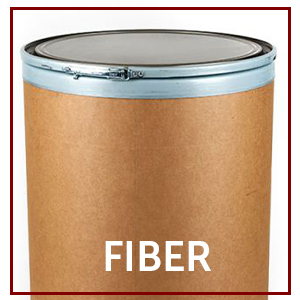

Fiber drums start out as cylinders rolled from many layers of kraft paper and adhesive. Bottoms multilayer fiberboard or metal, attached either with adhesive or mechanical fasteners, or both. The tops are either multi-layer fiberboard, polyethylene, or light gauge metal, held in place with clips or a locking ring. Some fiber drums have a polyethylene film-lined interior to accommodate wet products.
Many people ask, "Can I reuse or recycle fiber drums?" The answer is YES, with an “asterisk”. Fiber drums (particularly the polyethylene-lined ones, can be rinsed out and reused, which is easy to do for most kinds of products you usually find in a fiber drum. Residual odor could be an issue. But sticky products that won’t easily wash out are the end of the line for a fiber drum. Fiber drums can also be made from certain percentages of recycled paper.
Of course, we don’t expect this little blog to answer all the possible questions - for that, you need expert help. At BASCO, we’re much more than just a collection of products. We’ll help you get the right product, the first time, every time. To connect you with the BASCO experts, on steel, plastic, and fiber drums, along with thousands of other industrial containers and accessories, call 1-800-Pro-Drum or email us at info@bascousa.com.



